Cephalocereus: How to care for Old Man Cactus?
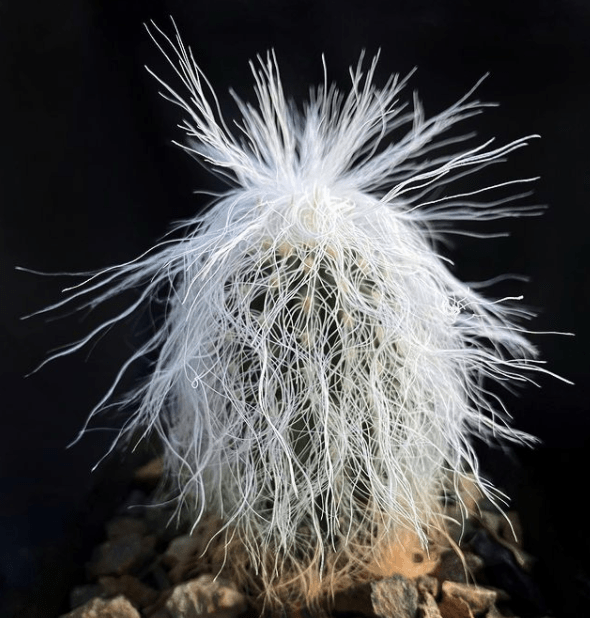
Cephalocereus description
Cephalocereus is a genus of perennial, slow-growing, columnar-shaped, blue-green cacti native to Mexico and Northern Central America.These columnar cacti belonging to the Cactaceae family are characterized by their stem covered in thick, white bristle, especially in Cephalocereus senilis, the most popular species in cultivation. Because of these white spines, these plants are commonly called “Old Man Cactus”. Cephalocereus Blossomings occur during June and July, they flower overnight and slightly rare to see because they last just one night. Furthermore, if they find good growing conditions, these cacti can reach 12 to 15 m height and up to 2m in diameter. However, when grown as houseplants, they grow in a very manageable size. If you plan to have a Cephalocereus cactus, put it outdoors in warm regions and indoors in cold regions.
Find out in this article what are the most popular species and how to care for them!
Popular Cephalocereus species
1- Cephalocereus senilis
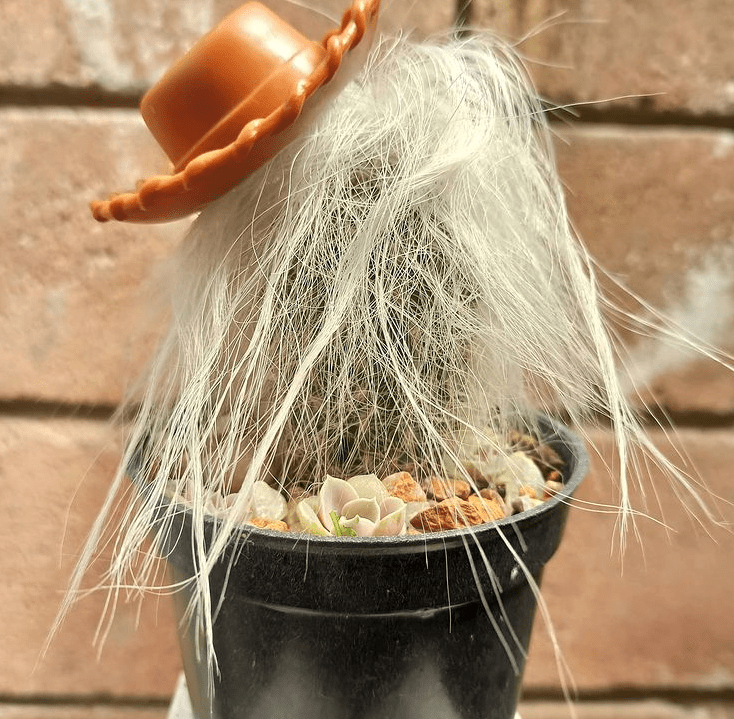
C. senilis, also called Old Man Cactus, Bunny Cactus, or White Persian Cat Cactus, is a columnar cactus native to Mexico, especially Guanajuato and Hidalgo. This succulent species has distinctive long white hair covering the cylindrical, light to bright green stem. Moreover, Cephalocereus senilis produces nocturnal, red, yellow or white flowers but only after 10 years. After the bloom, the plant produces pinkish-red fruits containing black seeds. Under the right conditions in the wild, Old Man Cactus can live to be 200 years old.
2- Cephalocereus hoppenstedtii
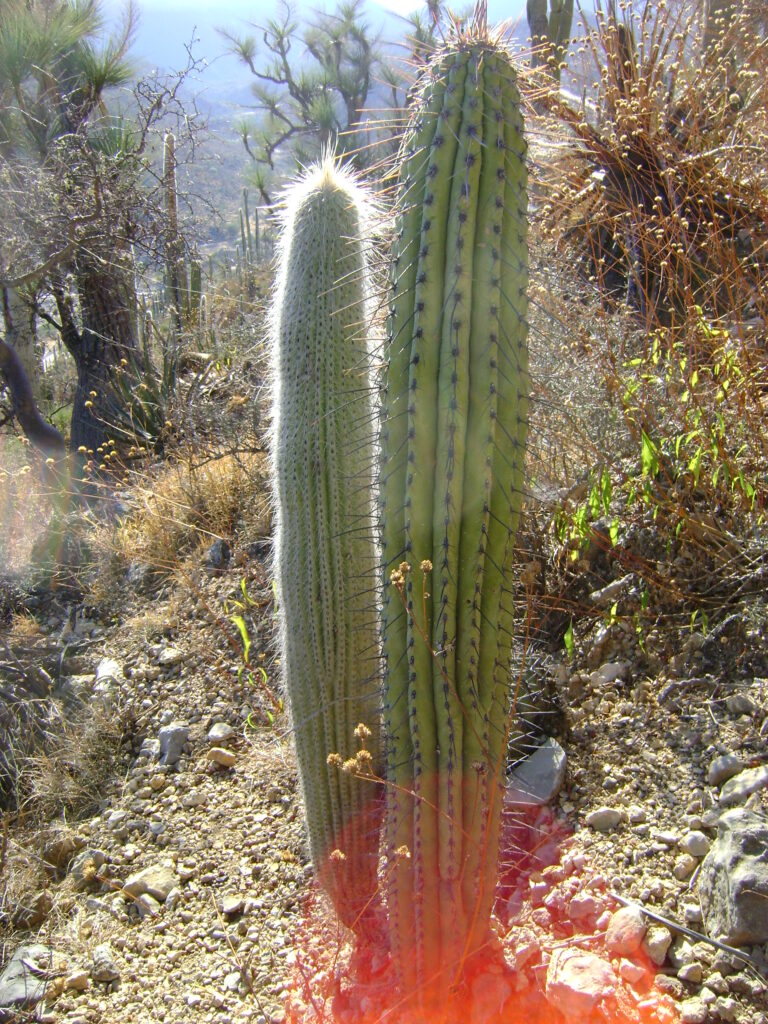
C. hoppenstedtii, known also as Cephalocereus columna-trajani or torch cactus, is a columnar arborescent cactus that can reach 6 to 10 m height. This Cephalocereus species has a slender, cylindrical stem with 16-20 ribs hidden under numerous spines. Nocturnal, bell-shaped, whitish flowers with rosy tips are produced by this cactus.
3- Cephalocereus palmeri
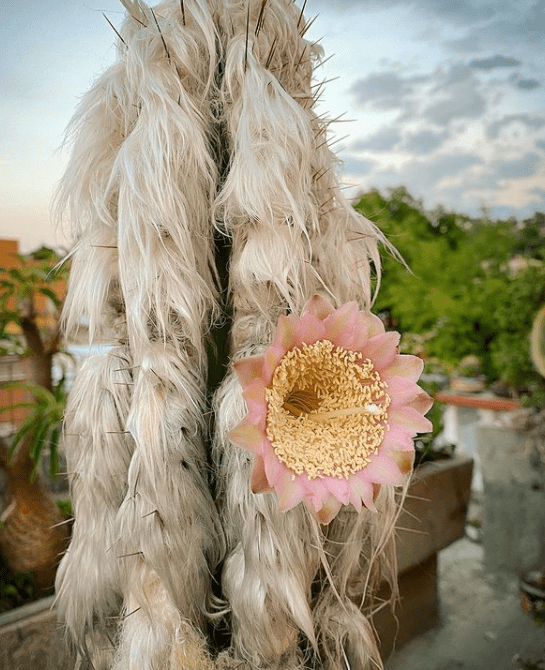
C. palmeri, also named Hairy Cereus Tree Cactus, is a beautiful cactus native to Eastern Mexico. This cactus tree has a slender stem which is greenish when young, then taking on a more bluish tint which contrasts well with the white bristles. Also, this cactus blooms during the warmest part of the year, in tubular, bell-shaped flowers, purplish to brownish outside, whitish to light pink inside. Then, globular and fleshy red fruits with abundant black and shiny seeds are produced.
4- Cephalocereus lanuginosus
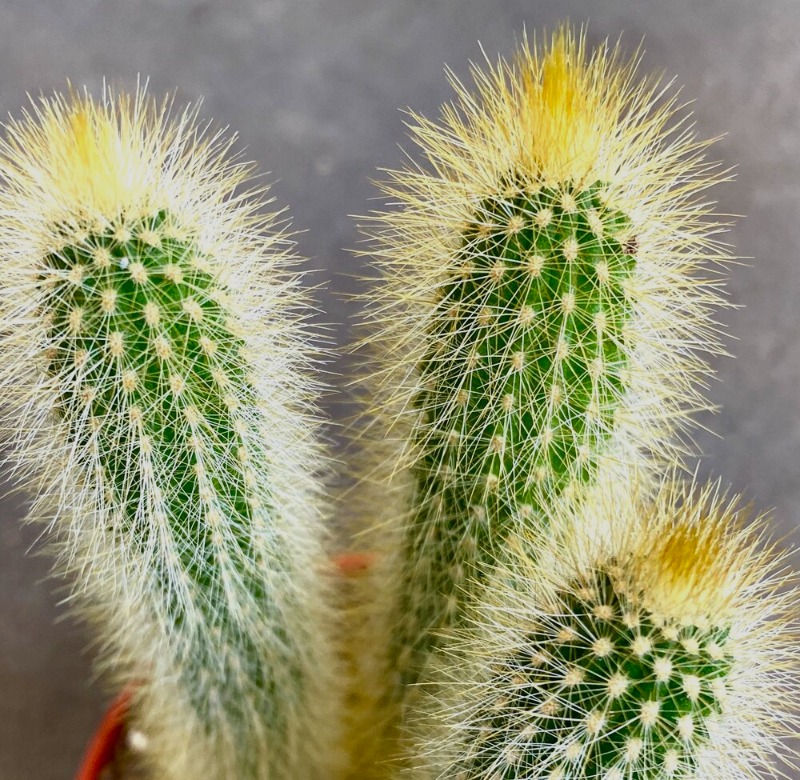
C. lanuginosus is a stunning cactus native to northern South America and the Caribbean. This cactus has a columnar green-blue stem with slender branches. Also, the stem has golden-yellow spines that turn grey with age. Because of its upright growth, it is great for indoors and doesn’t take up much space.
How to care for Cephalocereus cactus?
As the other succulents, Cephalocereus cacti generally need very little care. There are a few simple things you can do to help them thrive better.
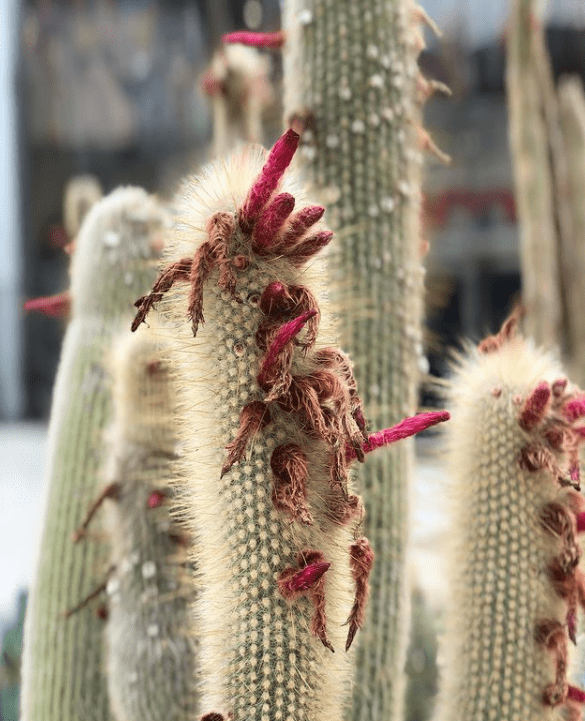
Light
These cacti need a lot of sunlight, so place them in a bright place. The abundance of direct light helps the pants to develop their typical bristles.
Water
Don’t forget that Cephalocereus plants are succulent, so they absolutely need less water. Between April and October a moderate weekly watering is recommended. In winter, watering should decrease or even be completely stopped. Also, don’t forget to allow the soil to dry out completely between waterings.
Temperature
For best growth, Cephalocereus plants need at least a temperature of 18°C.
Soil
Use a well-drained soil. When you plant or repot your cacti, you need a mixture of equal parts of loam, potting soil and sand.
Fertilizer
Fertilize your cacti with a cactus food in early spring.
Pests and diseases
Cephalocereus cacti can particularly be attacked by mealybugs. Overwatering is also a common cause of rot and disease.
Did you find this helpful? Share it with your friends!